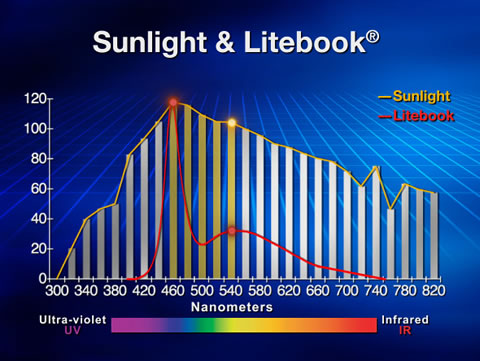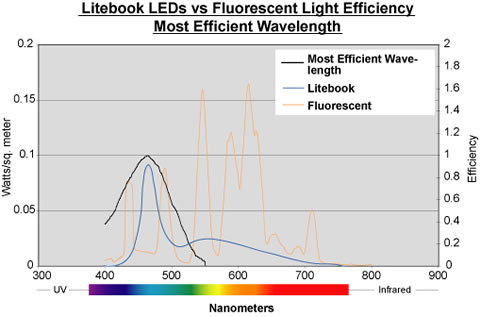
BioLogicCleanse is the registered name given to Body Detoxification
All selections within this site are 2004-2006 Copyright to Faith Engel
All selections within this site are 2004-2006 Copyright to Faith Engel
Only The Litebook® provides you exposure to the right light frequency that your body craves, when you do not get outdoors enough.
"There's a new type of light therapy that can treat the symptoms of Seasonal Affective Disorder. Mark Miller demonstrates this amazing new device that is really helping those in need..." Daily Planet, Discoverychannel.ca
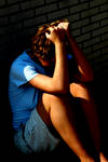
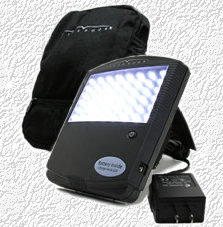 The Litebook's ® revolutionary white light emitting diode (LED) technology, delivers an astonishingly accurate frequency of bright light. These LEDs are rated to last up to 100,000 hours, and is the most compact, lightweight, and durable light therapy device available. The Litebook® includes a choice of an AC power adapter (compatible for your country) and nylon carrying case. The patented Litebook® is the best quality in LED light therapy product backed by clinical testing and a 2 year warranty with a 60 day money-back guarantee.
The Litebook's ® revolutionary white light emitting diode (LED) technology, delivers an astonishingly accurate frequency of bright light. These LEDs are rated to last up to 100,000 hours, and is the most compact, lightweight, and durable light therapy device available. The Litebook® includes a choice of an AC power adapter (compatible for your country) and nylon carrying case. The patented Litebook® is the best quality in LED light therapy product backed by clinical testing and a 2 year warranty with a 60 day money-back guarantee. Safely bring the sunshine indoors all year round...
and get your Benefits:
- Feel more energized naturally
Improve your mood and vitality
Change the Winter Blues into Winter Bliss
Combat the effects of Body Blues
Uplift the downs of Shift Work
Quickly recover body balance from Jet Lag
Turn sleep disorder into regular restful sleep
Adjust your teen's body clock to eliminate Morning Shuffle!
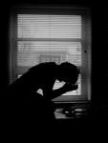 Winter Blues
Winter Blues Dark days of winter have a profound impact on our mood. Just consider how different and vital you feel during the summer months when the sun is shining in the morning and after you leave work. The winter blues trigger a downshift in mood that affects your ability to thrive. According to research, up to 25 per cent of North Americans experience winter blues, and at least twice as many women as men develop this condition. Approximately 5 per cent of North Americans experience a severe form of winter blues called Seasonal Affective Disorder (SAD), which is medically recognized as a sub-type of major depression.
You may experience Winter Blues effect as:
Fatigue, Difficulty concentrating, Irritability, Carbohydrate cravings, (especially comfort foods like chocolate, bread and pasta), Weight gain, Social withdrawal, and Low sex drive. These problems often disappear in the spring. If you experience three or more of these problems year-round, you may be suffering what is called Body Blues.
Most people who suffer from the winter blues respond well to the regulated bright light therapy provided by The Litebook®. If, however, you feel down for long periods during fall and winter, and notice significant changes in your appetite and sleep patterns, you might want to consult a physician. Depression has been found as a condition of bioenergy therefore BioEnergy Therapy sessions have proven extremely effective in resolving depressive conditions to quickly return to life enjoyment without medications.
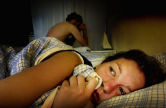 Body Blues
Body Blues The Body Blues is a popular term for a type of mild depression that is very common. The Body Blues isn't a severe mood disorder. Men and Women who have this condition can feel happy when something good happens to them. They may enjoy much of what they do and be quite effective at work and at home. Surprisingly, they may not even feel sad or blue. Nonetheless, their bodies are sending out signals of distress. Too much of the time, they feel tired, tense, or irritable. They know they should exercise more, but they find it hard to summon the energy and motivation. Many women with the Body Blues eat too much-especially late in the afternoon and early evening. Due to their low energy and food cravings, they may be significantly overweight, which can compromise their health, and undermine their self-esteem. When they stop and think about it, it seems as though their bodies were more depressed than their minds.
You may experience the Body Blues effect as:
Low energy, Overeating, Weight gain, Tension and irritability, Sleep difficulties, Difficulty concentrating, Mild anxiety, Mild depression, Decreased interest in sex.
Dr. Brown and colleagues at the University of Washington developed the LEVITY Program, based on three simple activities, each one proven to boost women's mood and energy or tame their appetites:
1. Using The Litebook® 30 minutes every morning.
2. Walking outdoors at a brisk pace for 20 minutes, five or more days a week.
3. Taking the following six vitamins and minerals on a daily basis: 50 mgs each of vitamins B-1, B-2, B-6; 400 mcg folic acid; 400 IU of vitamin D; and 200 mcg. selenium. Most of these doses are higher than those found in one-a-day multi-vitamin tablets, but all are within safe limits. For more details, refer to the book.
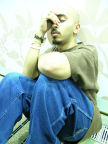 Shift Work
Shift Work Many night workers don't fit the stereotype of the shift worker. Think of actors, musicians, television news anchors, computer programmers, doctors on call, diplomats, business executives, and just about anyone who works long or irregular hours. Just like everyone else, night workers perform tasks requiring attention to detail, reasoning, decision-making, and other mental skills and Fatigue among shift workers is an internationally recognized problem across multiple industries. A night worker, even one who has slept reasonably well, is no more alert between 2 AM and 8 AM than a day worker who has slept only 4 hours per night, 2 nights in a row. The cost of mistakes made by fatigued workers-including lost production, missed days from work, and medical costs-exceeds an estimated $100 billion annually in North America alone.
You may experience Night Shift light deprivation effect as:
Many indicators of fatigue, including wandering and disconnected thoughts, Head or stomach aches, Drowsiness during shift and inability to sleep after shift, Inattention to minor but potentially important details, Degraded mental abilities (including memory, decision-making, and perception), Increased distractibility and irritability.
What can be done to lessen the adverse effects of shift work?
Clinical research now confirms that bright light, in specific wavelengths, can help shift the internal body clock and regulate sleep patterns when used for 30 to 40 minutes upon waking. With proper use of The Litebook®, shift workers and people who work irregular hours can feel more alert, energetic, and, in turn, notice an improvement in on-the-job performance.
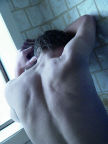 Chronic Fatigue
Chronic FatigueDo you feel run down and general lack of enthusiasm or energy to continue in life? If you regularly feel tired and unmotivated during waking hours you may be suffering from Chronic Fatigue due to light deprivation.
You may experience Fatigue from light deprivation as:
Eyes go out of focus or close for a moment, Slowed, slurred speech, Blurred vision or seeing mirages ahead, Wandering and disconnected thoughts, Headaches or stomach aches, Drowsiness, Inattention to minor but potentially important details, Degraded mental abilities (including memory, decision-making, and perception), Increased distractibility and irritability, Reluctance to initiate tasks and take command, Reduced sense of humor.
You can manage and resolve fatigue conditions?
In clinical studies, bright light exposure helps regulate sleep patterns by helping the body clock send appropriate signals to the rest of the body. While light exposure can never replace sleep, it may produce a similar energy-boosting effect as drinking a cup of coffee, without the side effects. Bright light exposure shouldn't be used to replace sleep or promote sleep deprivation. If fatigue persists the cause of your condition may be resolved to release fatigue through BioEnergy Therapy sessions.
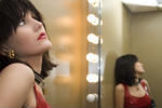 Jet Lag
Jet Lag Have you ever noticed that when you travel to a new time zone you feel tired, your mood is low, you have trouble sleeping when you want or have difficulty concentrating? You could be suffering from the effects of jet lag.
Jet lag, or dysrhythmia, occurs after east-west travel when your body clock isn't synchronized with your new time zone. It can disrupt more than 50 physiological and psychological rhythms. It gets worse with age - particularly after age 50. Unaided, it takes your body 1 day per time zone to readjust. It may take 2 to 3 weeks to completely realign your rhythms.
Until recently, jet lag was dismissed as merely an unpleasant side effect of air travel. New research suggests that it may also cause memory loss, shrinkage of parts of the brain and negative side effects on blood pressure. The good news is: now there is help.
Clinical research conducted at NASA and elsewhere demonstrates that in only 2 days your body clock can be reset to your new time zone with properly timed exposure to sufficiently bright light in specific wavelengths. With proper use of The Litebook®, your energy, mood, concentration, and sleep patterns can all be reset to your new time zone in as little as 60 minutes.
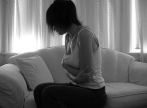 Can't Sleep?
Can't Sleep? At any age our body clock can be disrupted for many reasons, but as the body ages, the circadian clock begins to change. As result, individuals over 50 can experience changes in their sleeping patterns, which can affect their quality of life. There are multiple factors at play, including the weakening of the circadian rhythms, which control wake/sleep behaviors. Another factor is that older adults, especially those in nursing homes, generally receive inadequate light. In one sample of a nursing home, patients received only 1.6 minutes of bright light exposure per day.
You may experience the Light Deprivation effect as:
Sleep fragmentation, Sleepiness early evening and wakefulness in the middle of the night, Interrupted sleep, and Wandering.
You can reset your body clock!
Clinical studies have shown that as we age, we respond favorably to bright light exposure. Depending on the exact nature of the individual's sleep difficulties, he or she may benefit from 30 minutes of light exposure. The amount of time exposed to bright light is different for every individual. To develop a schedule that best meet your needs, you should seek advice from your health professional. (Bright light exposure is not recommended for individuals with a history of cataracts or macular degeneration, or who have undergone corrective laser eye surgery in the past 30 days.)
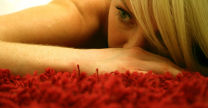 Teenage Morning Shuffle
Teenage Morning ShuffleWhen a teen nods off in morning calculus class, odds are that they really can't help it. While they may stay up late, they couldn't have fallen asleep at 11 PM even if they wanted to. In fact, there are biological, not behavioural reasons that teens shuffle around half awake in the mornings, and then come alive in the evening. Teens' circadian rhythms shift from a morning preference to an evening preference around the time of puberty. Their internal clocks are out of sync with their early morning school schedules. Research indicates that students only become alert and eager to focus around noon.
Teen's may experience the changed internal clock effect as:
Appearing groggy and grumpy, Falling asleep in class, Under perform on school activities and tests, Exhibit signs of sleep deprivation.
Teens can reset their body clock too!
Clinical research now confirms that bright light in specific wavelengths can shift the internal body clock and regulate sleep patterns when used for 15 to 30 minutes per day, as early as possible upon waking. The Litebook should be used on a daily basis during weekdays for optimum benefit - weekend days may be excluded without significant negative effect. Use can be a multitask part of the teen's normal morning routine e.g. while eating breakfast, checking email, completing homework, etc.
With he Litebook, a teen can reset his or her internal clock by receiving bright light exposure and thereby assist the body in suppressing melatonin during the day, which means improved alertness and mood for better ability to focus during the day, and then feel tired at an appropriate bedtime. Parents have reported The Litebook's successful change in their children within 2 weeks of daily school-day use.
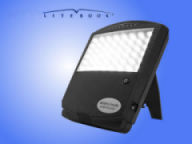 What makes The Litebook® so effective?
What makes The Litebook® so effective? Like house plants, humans can not thrive without the life stimulating rays of sunlight. However, just as science has shown that UV radiation from the sun can cause aging and illness, research has also shown exactly what light frequencies are beneficial to stimulate healthy longevity! The Litebook's patented technology uses new recently developed white light emitting diodes to generate a specific combination of wavelengths identical to the peak life breathing wavelengths of the sun - which turns out to be the wavelengths that our bodies respond to for health and wellbeing. Which makes sense since for millions of years, the sun was the original and only light source.
The Litebook's targeted unique combination of blue and green light frequencies results in health effective bright white light - just like the sun but it generates no UV radiation. The Litebook® is always safe for the eyes, safe for the skin.
HowLitebookWorks.jpg The Litebook is the light you need - every day.
Only The Litebook® provides you the right light frequency exposure your body craves.
The Litebook is Canadian manufactured under the strictest specifications at our state-of-the-art ISO certified facility. Each LED is painstakingly and individually tested to ensure it produces the precise intensity in the critical wavelengths that match the sun and have been clinically proven to be effective.
Like the sun, the light needs to be bright. You aren't going to get the benefit from ordinary indoor lighting... or Litebook knock-offs with inexpensive LEDs. They just don't have the energy in the critical wavelengths.
Now you can safely bring the sun indoors year-round - with the patented LED technology - available only from Litebook®.
How do I use The Litebook®?
The Litebook® Recommended Usage
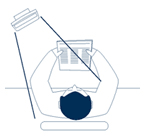 The Litebook® should be positioned approximately 12-24 inches (30-60 cm) from your face, and should be offset at a 30 to 45 degree angle, like sunlight coming in a window. Refer to the diagram for proper positioning of The Litebook®. The Litebook's light beam must be generally directed toward your eyes, and your eyes must be open to achieve completely safe benefit - with no harmful UV. The Litebook's light beam is very bright - like the sun - in order to provide the benefit you seek the Litebook frequency light simply filters into your vision. You do not stare at The Litebook - as you do not stare at the sun - although it is not harmful to glance at it occasionally.
The Litebook® should be positioned approximately 12-24 inches (30-60 cm) from your face, and should be offset at a 30 to 45 degree angle, like sunlight coming in a window. Refer to the diagram for proper positioning of The Litebook®. The Litebook's light beam must be generally directed toward your eyes, and your eyes must be open to achieve completely safe benefit - with no harmful UV. The Litebook's light beam is very bright - like the sun - in order to provide the benefit you seek the Litebook frequency light simply filters into your vision. You do not stare at The Litebook - as you do not stare at the sun - although it is not harmful to glance at it occasionally. Optimally, The Litebook® should be used first thing in the morning, as early as convenient for 15-60 minutes a day - ideally before 8 AM.. Find a routine that works best with your schedule. You may find it easiest to get your light while eating breakfast, exercising, applying makeup, or while working at the computer. Some people find a second exposure of bright light in the middle of the afternoon gives them an extra boost of energy to make it through the day. The Litebook® should not be used in the evening as it could interfere with your normal sleep time. (Exception: 50+ adults desiring to adjust their early sleep pattern; Everyone is unique in their light needs; you may have to try different exposure times to find your best level. Typically, you will recognize when you've received sufficient light - most often by feelings of heightened alertness, energy, and/or mood.
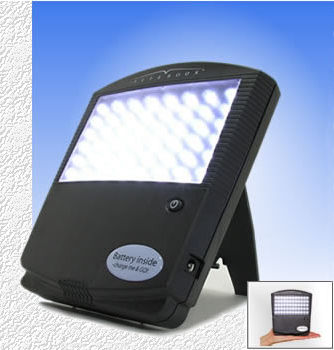 USE ONLY AS DIRECTED.
USE ONLY AS DIRECTED. The Litebook® emits an intense beam of white light. DO NOT STARE DIRECTLY AT THE LIGHT SOURCE. It is NOT harmful to glance at the light for a few seconds at a time.
We encourage use of The Litebook® while engaged in other activities, such as reading, eating, applying makeup, or working at a computer or desk. However, take care that The Litebook® is NOT brought into contact with water or heat-producing appliances, as they may damage The Litebook®, and may pose possible fire hazards.
Do not use this product if: you have a history of eye disease including, but not limited to, cataracts and macular degeneration, have undergone laser corrective eye surgery in the past 30 days, or if you are currently taking any medications including certain antibiotics which render you photosensitive (extremely sensitive to light). Please consult your ophthalmologist or health care provider if you have any concerns about the use of this product.
Occasional mild side-effects may occur, including headaches, a 'stinging' sensation in the eyes, and on rare occasions, nausea. Generally, these are due to the body's adjustment to the light, and should disappear after a few days. On rare occasions (1% of users) mania may be induced, typically from overuse. If these side-effects, or any other adverse effects not listed, do not resolve after three days, discontinue use of The Litebook® and consult your health care provider.
How long do I need to use The Litebook®?
Light therapy usage varies with the individual. For instance, usage times for winter blues are typically 15-60 minutes per day. Ideal exposure time is the morning, as early as possible. Additional sessions are indicated mid-day and early evening, as required.
How many LUX does The Litebook® provide?
The Litebook® is rated at 5,000 LUX at 20cm/8", with the normal usage distance being 45-60cm/18-24". However, there is a growing body of research demonstrating that the effectiveness of light therapy is less dependent on the intensity (LUX) than on the frequency or wavelength of the light. Numerous research reports on the same wavelengths of light emitted by The Litebook®, reduce melatonin while improving mood, and energy. Since the LEDs in The Litebook® produce light with a peak in the effective wavelengths of 465 nm, most users find that they need LESS time (typically 15-20 minutes/day) with The Litebook® than they did with the larger, 10,000 LUX units, despite the lower LUX rating. We theorize that this is due to the "targeted" efficiency of The Litebook® light for melatonin suppression.
Is light therapy covered by my insurance or health care provider?
Light therapy is recommended by healthcare professionals for combating SAD and other body-clock disruptions in the U.S. and Canada, as well as northern Europe and elsewhere. Patients in the Canada, U.S. and some other countries are able to obtain a prescription for light therapy from a physician, and increasingly, receive reimbursement from insurance companies for the purchase of a light therapy device. (Consult your insurance carrier for possible coverage.)
Clinical Research - 2003-2005 Clinical Trial
A CONTROLLED TRIAL OF THE LITEBOOK LIGHT-EMITTING DIODE (LED) LIGHT THERAPY DEVICE FOR TREATMENT OF SEASONAL AFFECTIVE DISORDER (SAD)
Researchers:
P.H. Desan, E. Michalak, A. Weinstein, R. W. Lam, E. Tam,
Y. Meesters, M. J. Ruiter, E. Horne, L. Stinson,
J. Telner, D. Boivin, H. L. Iskandar, R. Bowen
Research Institution:
1. Yale University, New Haven, USA;
2. University of British Columbia, Vancouver, Canada;
3. Groningen University Hospital, Groningen, The Netherlands;
4. Royal Ottawa Hospital, Ottawa, Canada;
5. McGill University, Montreal, Canada;
6. University Hospital, Saskatoon, Canada.
Objective:
The Litebook® is a small (less than 7" x 7" x 1.5") LED light therapy device delivering polychromatic white-appearing light of known composition. Its efficacy in the treatment of Seasonal Affective Disorder (SAD) was tested in a randomized, double-blind, placebo-controlled trial at 6 centers.
Methods:
Subjects aged 18 to 65 with SAD (DSM-IV major depression with seasonal pattern) were seen at Baseline and Randomization visits separated by 1 week, and after 1, 2, 3 and 4 weeks of treatment. Hamilton Depression Rating (SIGH SAD), Beck Depression Inventory (BDI) and Clinical Global Impression (CGI) scores were obtained at each visit. Subjects with SIGH SAD ³20 at Baseline and Randomization visits were randomized to active or control treatment: exposure to The Litebook (The Litebook Company Ltd, Medicine Hat, Alberta) or to an inactivated negative ion generator, at a distance of 20 inches for 30 minutes a day upon awakening and prior to 8 AM. The ocular safety and absence of UV emissions for The Litebook was verified by an independent ACGIH hazard analysis.
Results:
Of the 26 subjects randomized, 23 completed the trial. Group SIGH SAD scores did not differ significantly at randomization. At trial end, the proportion of subjects in remission (SIGH-SAD £8) was significantly greater (chi square), and SIGH-SAD, BDI and CGI scores significantly lower (t-test, percent score at randomization), with active treatment than with control, both for completed subjects and for all randomized subjects in an LOCF analysis. Conclusions: Treatment with The Litebook is an effective treatment for SAD as assessed by both clinicians (SIGH-SAD, CGI) and patients (BDI). The short treatment time (30 minutes) and portability of the device may increase patient appeal and adherence over other treatment options, including chemical antidepressants and other light therapy devices.
Other clinical trials with The Litebook®, for a variety of other applications, are ongoing and pending:
Research Institution & Area of Study
- U.S. Army - Walter Reed Army Institute of Research, Bethesda, MD - Performance enhancement in shift-work environments
- University of Maryland, Baltimore, MD - Teens with ADHD
- UC San Diego, San Diego, CA - Alleviation of fatigue in chemotherapy patients with breast cancer
- University of Surrey, Surrey, United Kingdom - Adjustment of shift-workers to night shift on North Sea drilling platform
- McGill University & Montreal Police Force, Canada - Performance enhancement in shift-work environments




